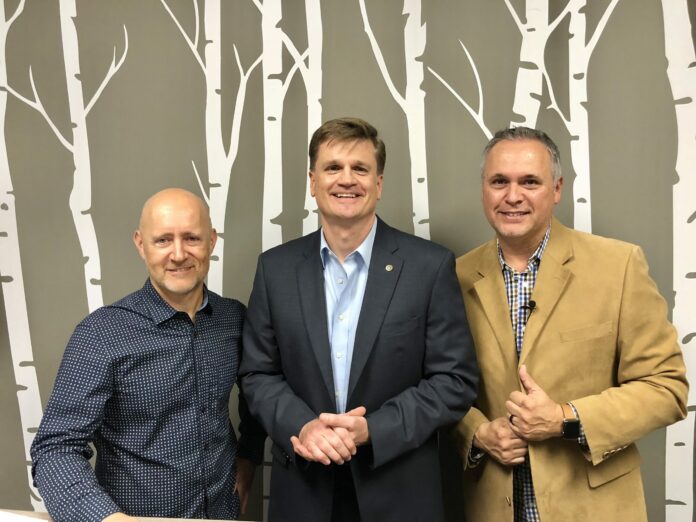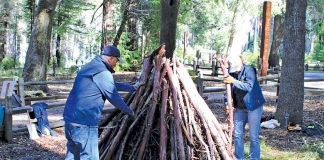
Residents of Scotts Valley know that there’s no finer place to raise a family and enjoy small town a sense of community that’s rarely found anywhere these days, all amidst soaring redwoods, next to stunning beaches and 45 minutes from the most dynamic economy in the world. The first job for any civic leader is to maintain this incredible quality of life that we enjoy, which I think can be done while making needed progress in several areas:
We can do better in producing more workforce housing. It is true that Scotts Valley cannot solve the problem of high housing costs in coastal California; for a small town of 12,000, fighting such strong forces of supply and demand is like trying to stop the tide from coming in.
We can, however, insist that our growth includes a larger portion of housing units that can be afforded by our cops, teachers and children. The Council should require developers to build more units that are “affordable by design” – studios, one-bedrooms, and smaller units that empty-nesters and millennials are increasingly demanding. I’d like us incentivize these smaller units by changing our fee structure to a per-square-foot basis rather than per-unit, which rewards construction that creates less impact on our roads and other infrastructure. Making it easier to construct additional dwelling units can also increase our affordable stock with minimal burden.
I’m also asking that the City’s Affordable Housing Subcommittee undertake a new task this year: assess the flood of creative proposals coming from organizations such as the Monterey Bay Economic Partnership, the Silicon Valley Leadership Group, local housing advocates and business organizations and others to identify proposals that will work for Scotts Valley. Our challenge in 2018 will be significant: how to preserve the City Council’s thoughtful approach to carefully managing growth in the face of an increasing number of large development proposals likely coming our way.
No one solution can solve a problem as systemic as high housing costs; but I believe new policies and fresh thinking can increase the ability of our workforce and kids to call Scotts Valley home without changing the small town character we cherish.
We can do better in requiring quality design standards. Scotts Valley is in the middle of a once-in-a-generation overhaul of our General Plan, which is our land use blueprint that guides future development. So far, we’ve enjoyed an unprecedented level of public input, with over 850 people attending our series of public meetings, open houses and completing detailed surveys on how our town should grow.
Just as our General Plan update comprehensively assesses land use, transportation, housing, conservation, noise, open space and public safety, we should similarly ensure that our own design standards are up to date and guarantee quality projects.
For example, previous developers have met our minimum parking requirements for their projects, but our police department has said these standards are insufficient. This disconnect needs to be fixed. I live in Skypark, where some driveways aren’t long enough to accommodate pickup trucks and the two-car garages are several feet narrower than the minimum required in most cities.
We need regulations that ensure all development in town is of high quality, and the City Council needs to stick to those standards.
We can do better engaging the community on the City’s and School District’s financial plight. Through no fault of our own, both the City of Scotts Valley and the Scotts Valley Unified School District are punished by state funding formulas that we have little ability to alter. The City receives less than half of the property tax money that other jurisdictions in Santa Cruz County receive, and the School District is among the lowest funded in the State.
The City has faced its fiscal challenges head-on over the years: cutting budgets and personnel even when we had reserves, reducing our staff by over 20% in the last 15 years, reforming pensions, maintaining our A+ credit rating and remaining tight-fisted with new spending. We also instituted a temporary sales tax to prevent cuts in services as we wait for new hotels, which are far and away our largest revenue generators, to start producing revenue.
Despite these measures, Scotts Valley is making ends meet today by dipping into our reserves. The coming years will require lots of public engagement on how we can better balance the books, including hard choices on whether additional revenues are required over the long term to continue our core services and quality of life.
Regarding our schools, despite the best efforts of an excellent Superintendent and School Board, Sacramento formulas have created a deteriorating fiscal problem that we will likely have to solve ourselves. Our community has stepped up in the past to fund our new middle school and prevent pink slips for teachers through new revenues that stay 100 percent in the community. 2018 is time for another conversation reaffirming that our schools are the bedrock of our community, and worth investing in.










